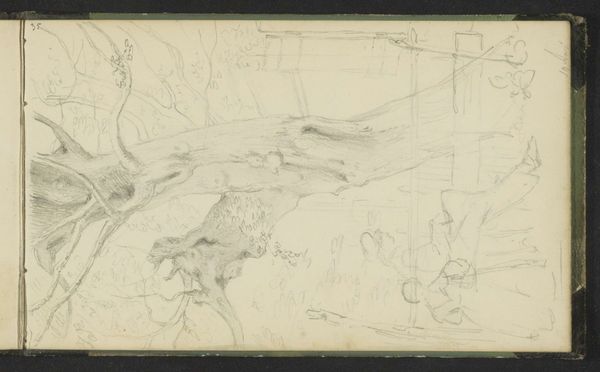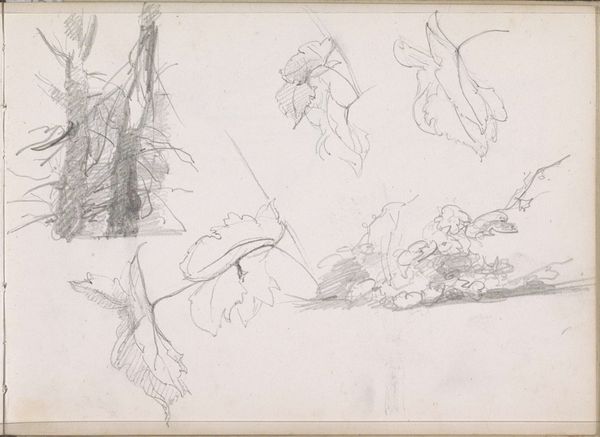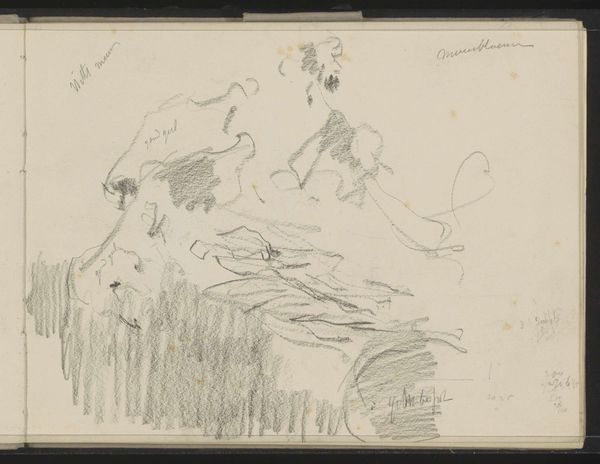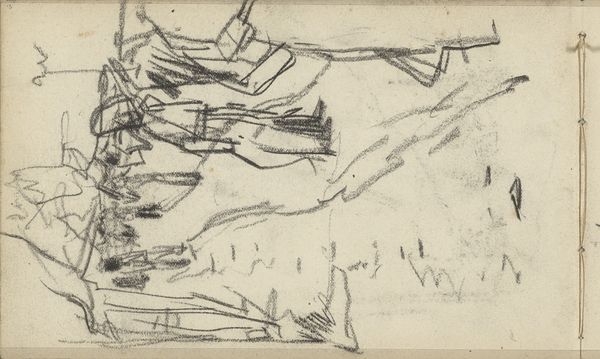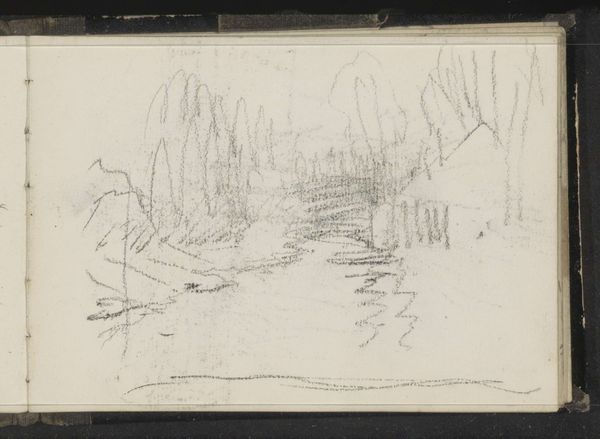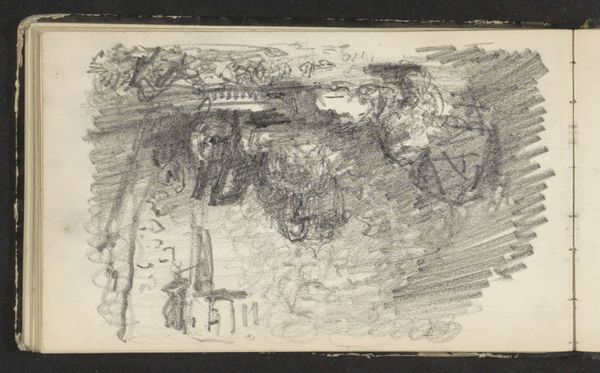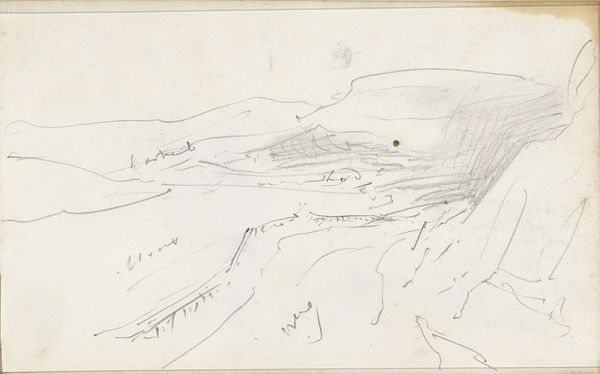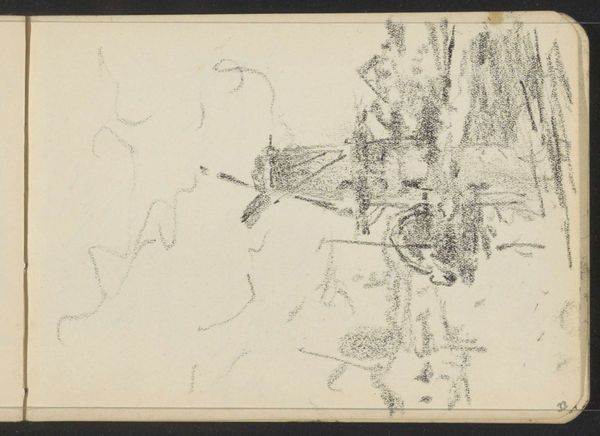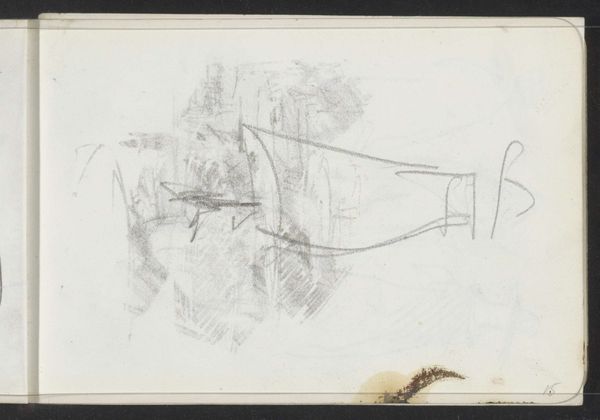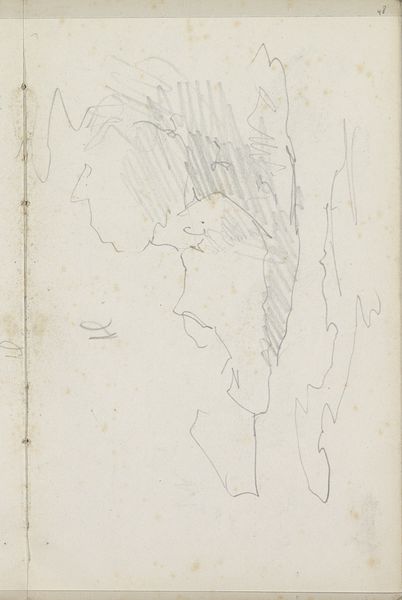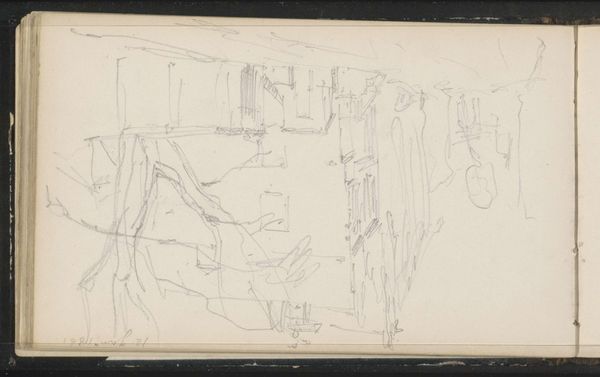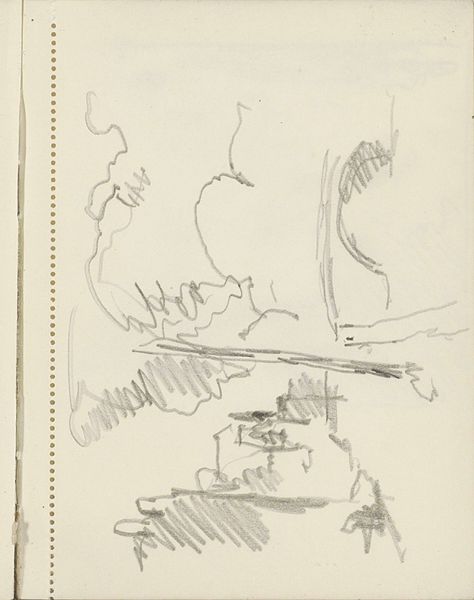
drawing, paper, pencil
#
drawing
#
pen sketch
#
sketch book
#
paper
#
personal sketchbook
#
sketchwork
#
ink drawing experimentation
#
pen-ink sketch
#
pencil
#
pen work
#
sketchbook drawing
#
storyboard and sketchbook work
#
sketchbook art
#
realism
Copyright: Rijks Museum: Open Domain
Curator: Welcome. Today, we're exploring a page from a sketchbook by Maria Vos, created sometime between 1856 and 1870, held in the Rijksmuseum. The drawing is called "Stillevens met een duif, kelk en diverse voorwerpen," a study of still life elements. Editor: Immediately, I'm struck by its provisional quality—the energy of the lines, the quick strokes, suggesting form without fully committing. The overall feeling is one of lightness and transience. Curator: That sense of transience resonates given Vos’ position as a woman artist working in the 19th century. Sketchbooks, often private spaces, were crucial sites for female artists to explore subjects freely and hone their skills outside the traditionally male-dominated academy. The "diverse voorwerpen," I find them more symbolic of women's labor. Editor: That's a compelling point. I see the appeal of contextualizing this in relation to the artist's gender and societal constraints. However, if we consider the formal relationships, notice how Vos uses hatching and cross-hatching to build volume and create depth despite the monochrome palette? Curator: And what meanings do you see in that depth? What kind of space does she craft? Is it one of freedom or confinement? Consider, too, the dove—a symbol laden with religious and secular associations, perhaps reflecting Vos’ own spiritual and societal expectations. This sketchbook work is representative of identity, gender, race, and politics that speak to current cultural movements. Editor: I appreciate the invitation to unpack symbolic meaning. From a formal perspective, though, the dove’s placement creates a dynamic tension, an asymmetry that invigorates the composition. This suggests the use of negative space, allowing it to breathe as much as it needs for the viewer. Curator: I can respect your visual assessment while underlining that female artists’ negotiation of symbols and materials should reflect a certain lived, or maybe lost, reality. What meanings and positionalities do the artworks expose in this case? It seems important to highlight those intersectional insights into gender. Editor: Well, looking at the lines, values, forms, the symbolism gives it life, if that’s what you're looking for. The form itself almost mimics such struggle. It would be worth investigating further!
Comments
No comments
Be the first to comment and join the conversation on the ultimate creative platform.
